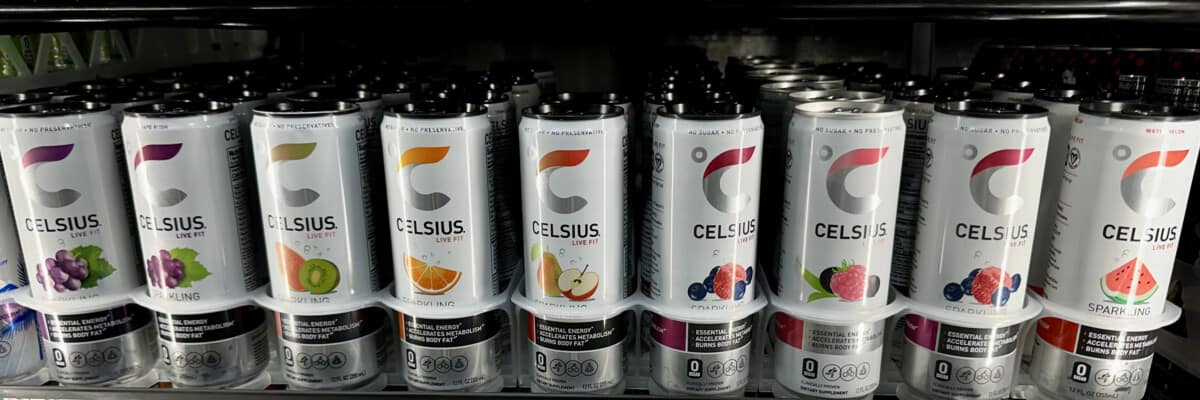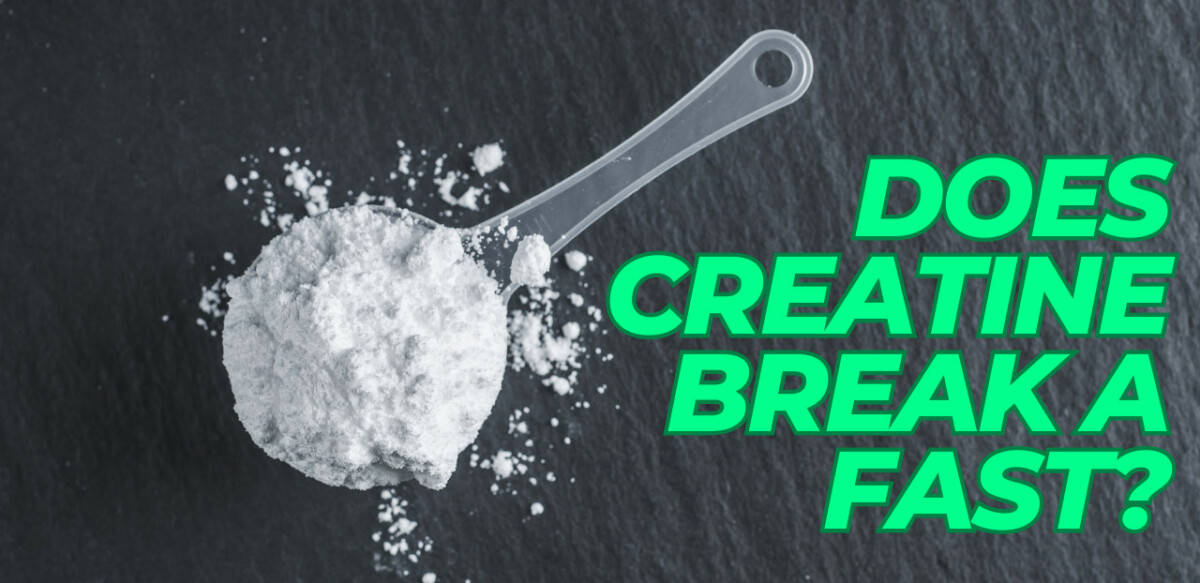Most people assume vegetable oils are healthy for them, but the shocking truth is they’re very bad for you and can even be harmful to your health.
It’s easy to assume consuming vegetable oils is a healthy choice since they are made from vegetables. In the 1980s we were told to consume vegetable oils (also known as seed oils) instead of natural fats like butter because it was a healthier option. Turns out this was a lie!
More studies are coming out finding consuming vegetable oils is very bad for your health and is making you fat (1).
Putting the wrong vegetable oils into your body can cause inflammation in your gut. Vegetable oils can cause intestinal problems such as leaky gut syndrome and immune system disorders (2).
They then spread out into your arteries and nervous system along with the rest of your body. These bad oils can block the enzymes used to help break down fat for energy. This can cause you to gain belly fat and make you gain weight.
Bad oils are widely used in processed foods because they are so cheap for food manufacturers. They add them to foods to help prevent mold growth and improve shelf life. Yet at the same time, these food manufacturers are turning healthy foods into ones that cause inflammation.
It’s crazy to think smoking cigarettes is probably better for your health than consuming these bad oils. It’s right up there with sugar as the worst foods for your health.
I’m sure you’ll agree it can be confusing to know which vegetable oils are healthy for you. Here you will discover which vegetable oils are bad for your health and are causing you to gain weight.
You also uncover the healthiest oils for your health and to use for cooking. These are the few vegetable oils you should actually be consuming to help slim your waistline and improve your health.
Why Vegetable & Seed Oils Are Unhealthy
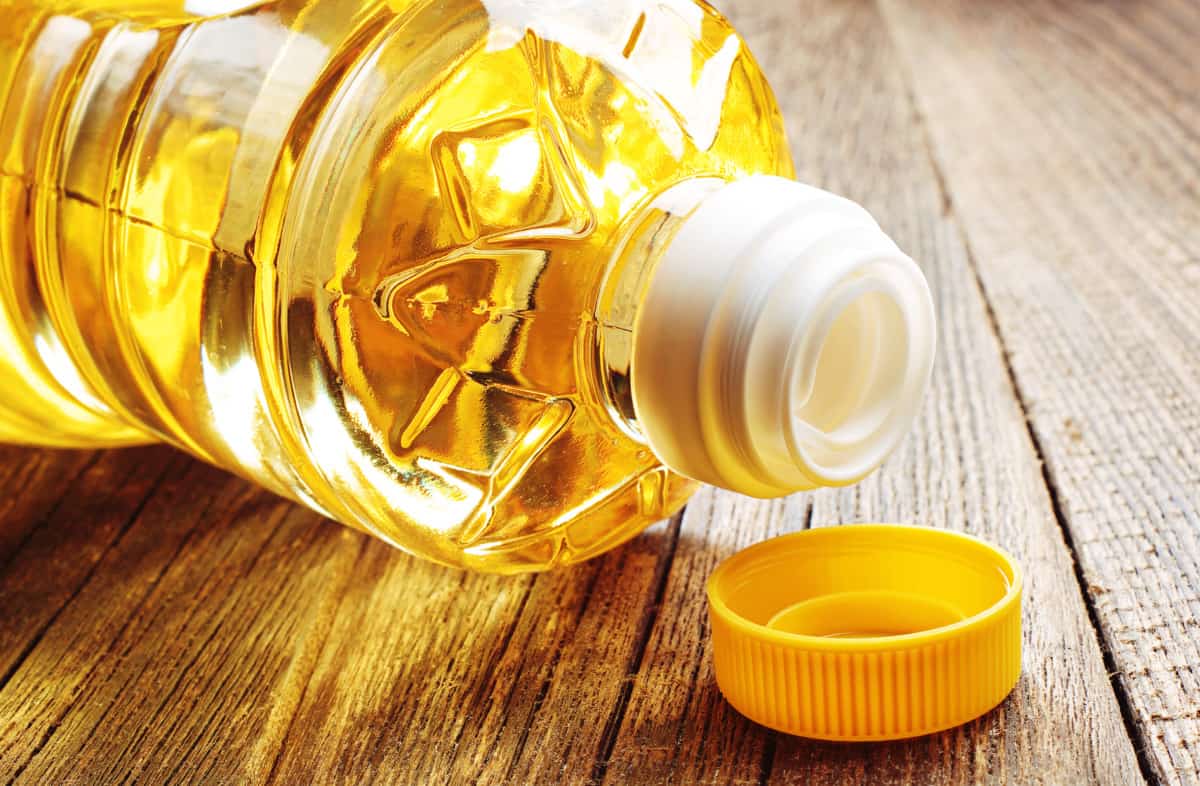
Years ago we were told fat and cholesterol were what caused heart disease. You can literally picture somebody eating butter and then the fat clogging up an artery like a greased pipe.
And just about every professional medical organization recommended and endorsed consuming vegetable oils as a healthier choice for preventing heart disease.
These oils have long been thought to be healthy for you. Not only for your weight but also for your heart health. We’ve been swindled!
Turns out your body doesn’t move the cholesterol you eat from animal fats like eggs, butter, and red meat into your arteries. More and more studies are coming out proving so (3).
The truth is the whole “low fat” campaign wasn’t based on much scientific evidence. Switching your grass-fed butter for margarine turned out to be one of the worst nutrition mistakes of all time. The partially hydrogenated oils (trans fat) in margarine cause obesity and heart disease.
This study in BMJ analyzed data from older studies and found the link between vegetable oils being heart-healthy was not as solid as we thought all along (4). The researchers found eating too many of these bad oils can actually increase your risk of heart disease.
The reason these vegetable oils are so bad for you is they contain high amounts of omega-6 fatty acids. Eating too many of these omega-6 fatty acids is very bad for you as humans weren’t designed to eat so much of them (5).
Food manufacturers just started producing vegetable oils a little over 100 years ago. Throughout human existence, we didn’t have access to these heavily processed oils so our bodies are not accustomed to processing them.
Between the years 1909 and 1999 vegetable oil consumption is now at a thousand times what used to be (6). In 1909 just 2.7% of your calories came from omega-6 linoleic acid, but in 1999 7.2% comes from it.
These oils go through a heavy manufacturing process. Unlike butter and coconuts because they can’t be pressed or naturally separated. To remove oils from these vegetables and seeds the manufacturers have to use processing, heating, chemicals, and toxic solvents like hexane.
Chemically removing, deodorizing, and altering these vegetables causes a lot of problems that are harmful to your body. The heavy processing these oils go through depletes them of their phytonutrients.
Even if you go with one of these bad oils that’s “organic” it will still be high in omega-6s. They are usually more expensive too.
Food manufacturers add these oils to increase shelf life for processed foods at the expense of your waistline. If you check the nutrition label on many processed foods you’ll see it usually contains one or more of these bad oils.
The truth is vegetable oils are not the same as olive oil. Extra virgin olive oil is healthy for you because all they do in the manufacturing process is press the olives to extract the oil. They’re not putting olive oil through the same heavy manufacturing process as olive oil. This keeps it a natural fat instead of a processed fat like canola oil.
The 8 Unhealthiest Vegetable Oils to Cook With Are:
- Canola (rapeseed) oil
- Corn oil
- Cottonseed oil
- Soybean oil
- Sunflower oil
- Safflower oil
- Grapeseed oil
- Rice bran oil
These vegetable oils tend to be very heavily processed. Chemical solvents are used on them. Refined oils are also more popular because unrefined oils often taste very bad and contain unwanted compounds. So increasing shelf life and better taste make it an easy decision for food manufacturers to put them in their foods.
Sunflower oils are thought to be a healthy vegetable oil but they release toxic compounds when exposed to high heat. Sunflower oil is also generally high in omega-6 fats. Safflower oil is another vegetable oil that’s high in omega-6 fats too.
Some examples of foods that contain these pro-inflammatory fats include:
- Breakfast cereals
- Fried foods
- Chips and cookies
- granola
- soft breads & buns
- rice milk
- soy milk & other soy-based meat products
- salad dressings
- margarine & spreads
Omega-6 / Omega-3 Fatty Acid Imbalance
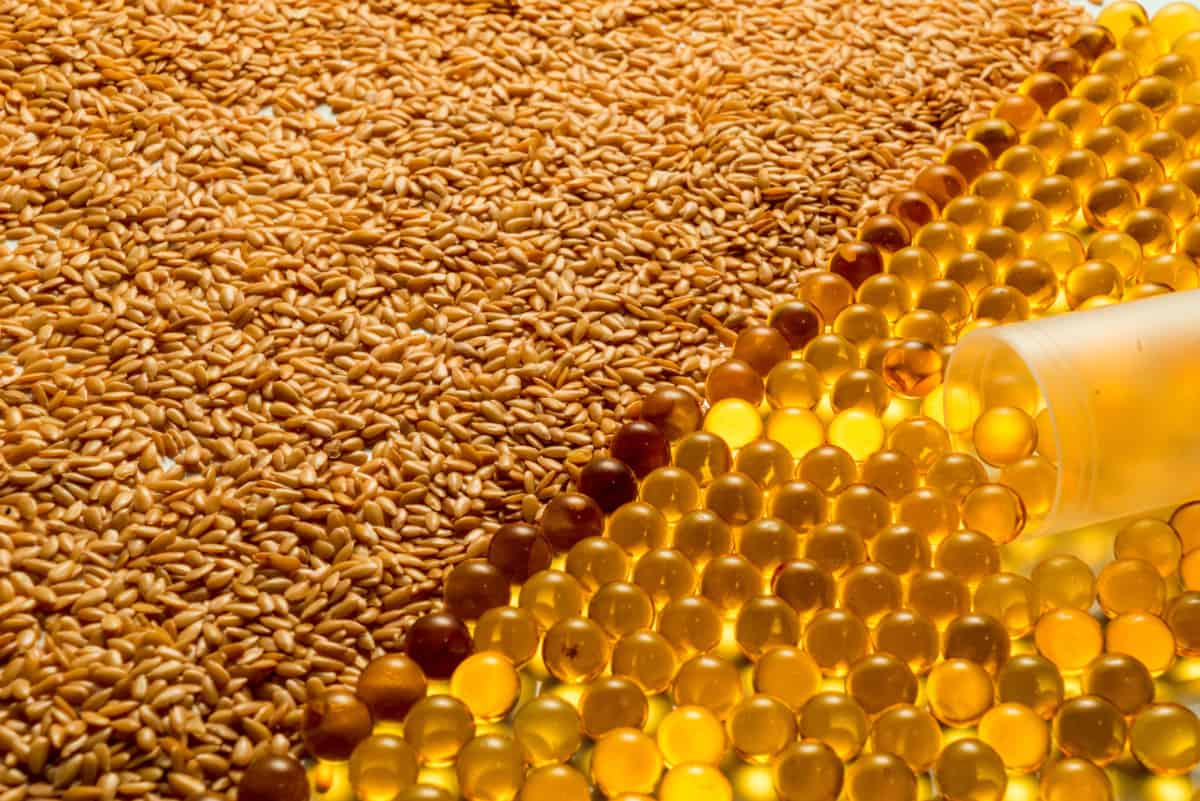
Your body needs the essential fatty acids omega-6 and omega-3s from your diet since we can’t make them on our own. They’re needed for vital functions such as your immune system. Your body also needs to maintain a balance between the two of them.
Ideally, you’ll have a 1:1 ratio of omega-6s to omega-3s or at least close to that. But today this ratio has skyrocketed out of balance all the way up to 20:1 (7).
Studies have found this imbalance of omega-6 fatty acids causes inflammation and obesity (8). Balancing it out with omega-3 fatty acids will help to fight this inflammation (9).
The more omega-6s you put into your body the more omega-3’s you’ll need to counteract it. That’s why supplementing with a powerful omega-3 like OmegaKrill will greatly benefit your health and waistline.
But just consuming more omega-3s will not be enough. You also need to lower your intake of omega-6s. A good start is to stop eating processed foods and bad oils.
The traditional Western diet in the United States is very high in omega-6s and low in omega-3s (10). This is one of the reasons why the Western world has so many problems with obesity, diabetes, cardiovascular disease, depression, and cancer. Human history has never seen near this high of obesity and heart disease rates of today.
Many studies have linked omega-6s to cancer such as a study out of the University of Western Ontario (11). The researchers found saturated fats produced the least number of cancers while omega-6s produced the most. Crazy enough they found polyunsaturated fatty acids stimulated cancer growth while saturated fats did not.
Most of these bad oils contain too much linoleic acid. This is a fatty acid that will cause inflammation in your body when exposed to heat. This increases oxidative stress when it makes its way to your cell membranes and lipoproteins. Oxidative stress can cause damage to your cells and accelerate aging in your body (12).
Throughout history, humans have had very small amounts of linoleic acid in the diet, but the modern Western diet contains way too many from these bad oils. That’s why it’s critical to correct this imbalance by supplementing with omega-3 alpha linoleic acid.
How Vegetable Oils Make You Fat
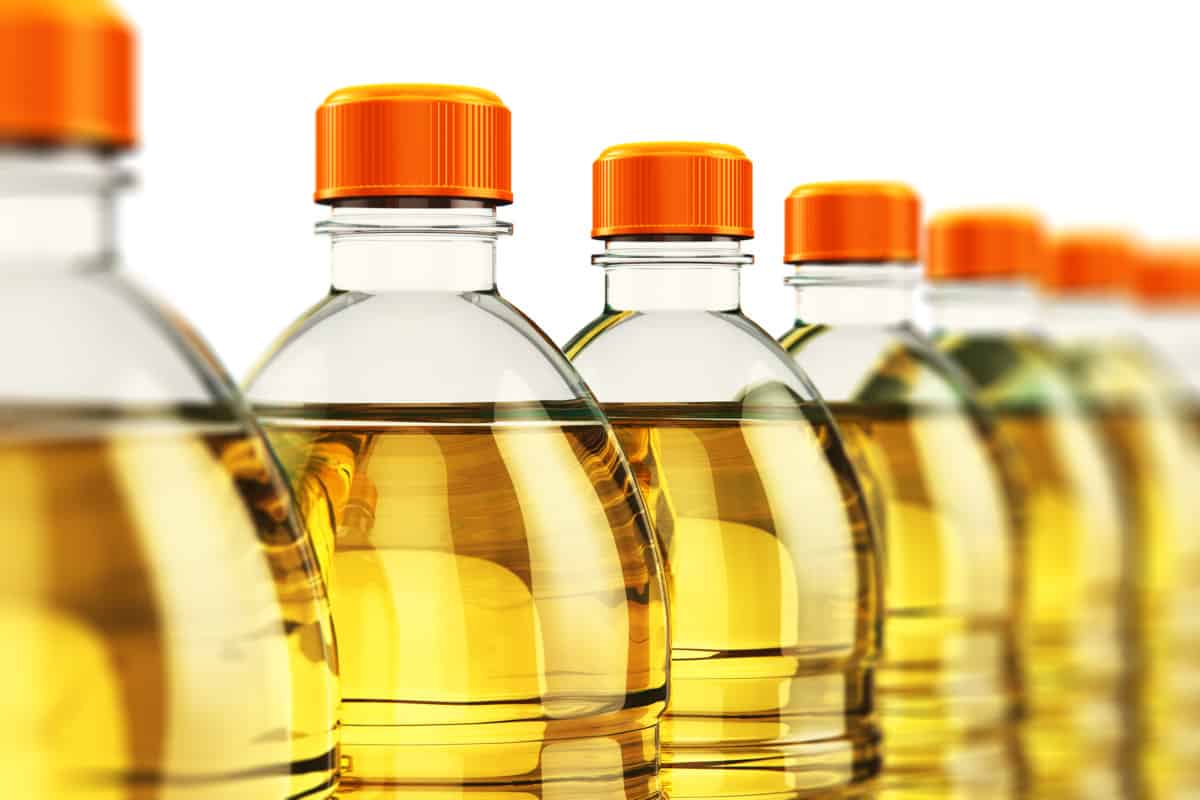
When you start to fill your body up with these unnatural processed fats then your body gradually becomes to be made up of these same bad fats.
Your body fat is designed to be used as energy and fuel especially when you run out of quick-burning glycogen (stored carbohydrates). But if your body is made up of these processed fats it has a hard time utilizing them for energy.
So your body gradually needs to turn to an alternative fuel source for energy and that’s sugar. Next thing you know you’re searching out and eating foods that are rich in sugar and starchy carbohydrates.
Eating sugar and starchy carbs causes your body to release insulin which ends with you storing these calories as fat if they’re not quickly burned off.
You’re not only storing these bad processed fats in your body with the inability to burn them off but you’re also putting your body in a fat-storing state by eating sugar and starchy refined carbs.
This also creates a deadly cycle of sugar dependency. Studies have found sugar consumption leads to addiction and dependency by triggering the same brain pathways as drugs (13).
You can see how consuming these bad oils wreck your metabolism. This has lead to the drastic obesity and cardiovascular disease epidemic in the Western world.
Consuming natural fats like grass-fed butter and pastured eggs are good for you because they help you absorb nutrients. Cholesterol also naturally lowers your appetite helping you to eat less (14).
The key to reigniting your metabolism is to stop eating these unhealthy oils, sugar, and starchy carbs. Instead, eat real whole foods and while keeping your calories in check.
Healthy vs Unhealthy Fats

Since the 1950s many of these vegetable oils have replaced saturated fats in the diet. This bad health information has led to the skyrocketing obesity epidemic that’s going on in the world today.
In the 1950s a campaign came out against saturated fats linking them to cardiovascular disease and weight gain. In reality, they were good for you all along.
The American Heart Association recommended substitute animal fats like butter for “healthier” vegetable oils. Since they were from vegetables they had to be healthy for you… right?
Turns out the American Heart Association began receiving big donations from vegetable oil food manufacturers to recommend their products. They were tricked with bad studies linking fat consumption and cholesterol to cardiovascular disease (15).
Now your body needs healthy fats for rebuilding cells and hormonal production. Throughout human history having higher blood cholesterol levels was perfectly good and healthy for you. More studies are coming out finding low cholesterol numbers can lead to health problems and even higher death rates (16). Good healthy fats should not be avoided in moderation.
But bad vegetable oils contain very high amounts of processed polyunsaturated fats. When heated these polyunsaturated fats become toxic which is why you shouldn’t cook with them.
They’re so heat sensitive that these processed vegetable oils contain trans fats even though their label might say they’re “trans fat-free.”
Canola oil is the worst of these cooking oils because it degrades so fast. The chemical solvent hexane is usually used when manufacturing canola oil. Then they heat up the canola oil which causes it to turn rancid. This destroys the healthy omega-3s in the canola oil and creates deadly trans fats.
When you’re eating too many processed polyunsaturated fats it’ll cause your body to use them in cell repairing and creation. You can see how eating these bad fats is affecting you not only in your waistline but on a cellular level.
This causes inflammation and mutation in your cells that can lead to weight gain, heart disease, and cancers. The cells in your arteries can begin to clog as the inflammation from these heavily processed oils starts to build up.
These bad oils make their way to your skin cells and can cause skin cancer (17). You’ll even be more likely to sunburn just from eating too many of these bad oils.
Vegetable Oils Are “Liquid Death”

Trans fats are the worst of their kind. They are unsaturated fats modified by food manufacturers to be solid at room temperatures.
The vegetable oils you’re eating contain mostly heat-sensitive polyunsaturated fatty acids. When they are heated they turn into toxic compounds including trans fats (18).
Margarine was once thought to be very healthy for you. But these hydrogenated oils are horrible for your health and weight. Trans fats are highly toxic and linked to the increased risk of cardiovascular disease, diabetes, cancer, and obesity (19).
These toxic fats also cause a drastic rise in the formation of free radicals. These free radicals cause oxidative stress and wreak havoc on your body causing you to age faster, get heart disease, hair loss, diabetes, degenerative brain diseases, and more (20).
This is why it’s a smart idea to supplement with a powerful antioxidant like astaxanthin. OmegaKrill contains AstaREAL which uses the most absorbable form of it known as the “strongest antioxidant known to science.” (21)
Pure & Potent Omega-3 Supplement
- Each serving is packed with 1040mg of DHA providing support for brain, heart, eye, joint & immune health
- Omega-3 fatty acids provided in natural triglyceride form for maximal absorption
- 3mg of AstaREAL Astaxanthin - one of nature's most powerful antioxidants
- Premium, pure & potent omega-3 fatty acids from wild, cold-water sources… no fish burps!
Governments have finally begun taking action against trans fats by banning them in foods. They’re also making food manufacturers significantly lower their content in foods.
But many vegetable oils contain these trans fats even in small amounts. This study found soybean and canola oils contain 0.56 to 4.2% fatty acids from trans fats (22).
Even organic, expeller, and cold-pressed canola oil can still contain trans fat and other cancer-causing ingredients that are toxic to your health.
You really need to cut out the trans fats from these toxic oils in your diet to the absolute minimum. They’re horrible for your health and waistline.
Be sure not to reuse or reheat cooking oil. It’ll make the cooking oil more carcinogenic and drastically increase their free radicals (23).
If you are using a vegetable oil with heat cooking be sure to keep it under its smoking point. Once it hits its smoking point it creates toxic compounds and creates free radicals.
Want A Heart Attack?

These bad oils can clog your arteries and bring heart disease. Heart disease is the number one killer in the entire world for both men and women. Even more than cancer (24).
At one time it was thought saturated fats were the enemy. It turns out in moderation they were harmless all along (25).
Bad oils are one of the main causes behind the high amounts of weight gain and the serious health problems associated with it in the Western world. There are many studies proving eating too many of these heavily processed oils will significantly increase your risk of heart disease.
This study in Epidemiology found the more margarine consumption the more likely people were to have a heart attack. But when they ate more butter the heart attacks went down. Guess this is why scientists say margarine is only one molecule away from being plastic (26).
Free radicals are missing an electron which makes them out of control and highly unstable. They relentlessly damage your body tissues like molecular radiation as they look for other molecules to complete their missing electron.
These free radicals when mixed with the trans fats from bad vegetable oils harden your arteries and cause inflammation. They’re like tiny atom-sized bullets shooting around inside your body.
According to this study, people with the highest amounts of omega-6s also have the greatest risk for cardiovascular disease. The inflammation caused by consuming too many omega-6 fatty acids is reason enough to get them out of your diet for good (27).
Even this study found omega-6s increased the risk of cardiovascular disease. While consuming more omega-3’s had a protective effect against them (28).
Try supplementing with some omega-3 rich supplements like fish oil or krill oil to fight this inflammation that can cause weight gain and heart disease.
Healthiest Cooking Oils
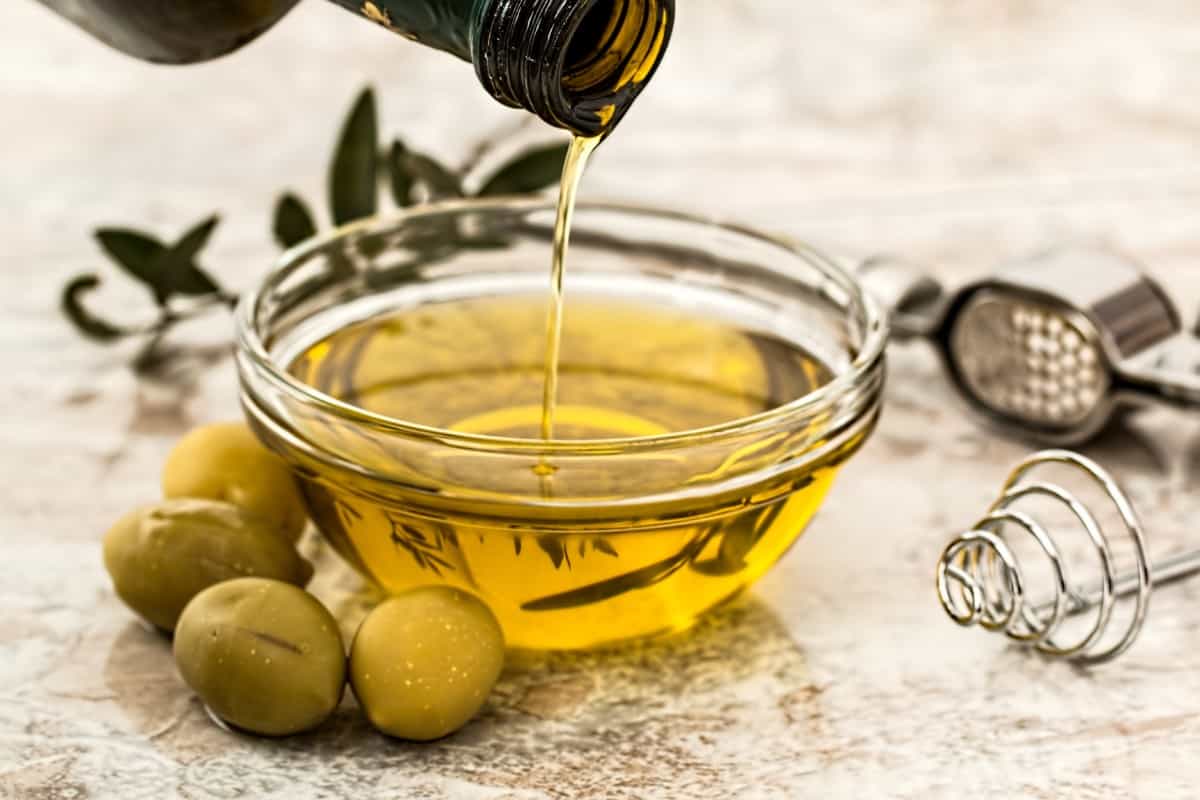
Now not all vegetable oils are bad for you. There is a handful that are actually healthy and good for you.
They’re rich in omega-3s and not heavily processed and refined like the above industrial vegetable oils. Be sure to swap out whatever bad vegetable oils you have in your pantry with the ones listed below.
The List of Good Cooking Fats:
- extra virgin olive oil
- avocado oil
- peanut oil
- grass-fed butter & ghee
- macadamia nut oil
- coconut oil
- palm oil
- almond oil
- animal fats (lard, tallow)
Your health will improve and your waistline will shrink once you start to correct the imbalance of omega-6 fats to omega-3 fats (29). You’ll feel 10x better getting these bad vegetable oils out of your diet for good and replacing them with good fats.
Coconut oil gets a bad reputation concerning its higher saturated fat content. Your body does need some saturated fat to thrive but you probably shouldn’t eat a ton of it. Coconut oil might contain a high amount of saturated fat but it’s also rich in MCTs.
Your body quickly converts these MCTs into ketones and they’re not processed like other typical saturated fats. MCTs like those from coconut oil have been found to increase the fat-burning metabolism and can even help to get rid of belly fat. Just make sure you go with virgin coconut oil since it’ll be significantly less processed (30).
Sesame oil, walnut oil, and flaxseed oil are good fats but I wouldn’t cook with them or heat them at all. They do contain polyunsaturated fats (less than the worst offenders) so use them as a salad dressing instead and not for heat cooking.
Best oil for frying: If you have to fry your food then use palm oil. It has a high smoke point and does well when frying foods or stir-frying. But this oil is controversial because the increasing demand for it is leading to deforestation.
You can find my complete list of the healthiest cooking oils here.
Which vegetable oil is the healthiest?
The healthiest vegetable oil is definitely NOT going to be canola oil, cottonseed oil, corn oil, soybean oil, sunflower oil, or safflower oil. Instead, I’d go with one that’s higher in omega-3 fatty acids like extra virgin olive oil instead. The monounsaturated fats in olive oils are mostly oleic acid. Oleic acid has been found to lower inflammation and is more resistant to high heat cooking temperatures.
Is Crisco vegetable oil bad for you?
Yes without a doubt I would highly recommend against using Crisco cooking oil for your cooking and in your foods. It’s quite high in omega-6 fatty acids which over time greatly contributes to not only weight gain but heart disease and even cancers.
The Last Word
The days are gone when it was thought eating fats would not only be bad for you but also make you fat. Turns out eating the wrong kinds of fats in the form of vegetable oils were the criminals in disguise.
Along with sugar and processed carbs, these bad vegetable oils should be eliminated from your diet. Most of the popular vegetable oils you’ll find at the grocery store today are very bad for your health. They’ll give you weight gain, depression, heart disease, arthritis, diabetes, and even cancer.
When heavily refined these temperature-sensitive vegetable oils destroy the healthy polyunsaturated fatty acids along with their antioxidants. Turning them into zombie mutated ones instead.
Getting rid of these bad vegetable oils from your diet will make a big improvement in your health and your weight. Instead switch them out for healthier choices of vegetable oils including extra virgin olive oils, avocado oil, coconut oil, and palm oil.
Vegetable oils are not healthy for you and they’ll lead to serious health problems like heart disease, inflammatory bowel disease, and obesity. It’s much better to consume natural saturated fats such as those from butter and animal meats.
These plant oils are deceiving since we assume they’re a healthier option than getting your fat intake from animal products. But the bottom line is these bad vegetable oils are not only fattening but they’re also bad for your health. Instead, stick with the approved good vegetable oils and getting your fats from animal products like butter instead.
Josh holds a Bachelor’s degree in Exercise Physiology and Nutrition Science. He’s a Certified Strength and Conditioning Specialist (CSCS) by the National Strength and Conditioning Association and he’s a Certified Personal Trainer (CPT) by American Council on Exercise. He’s worked as a Strength and Conditioning Coach at the high school and college levels. He has over 15 years of experience as a personal trainer and nutrition coach. He strives to bring inspiration and results for people to live healthier lives through smart diet and exercise.







